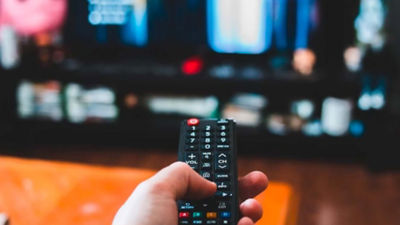TV continues to play a central role in the UK population’s media habits, and TV advertising drives the highest attention and effectiveness due to its high content quality, viewability and non-skippable nature. With attention being a scarce resource, Dentsu’s Attention Economy paper details how only one third of ads get audience’s full attention. When people can skip ads, they often do. And when viewers cannot skip, they often look away. We know that every second of viewing time counts – the longer the dwell time, the more opportunity the brand has to communicate, and the bigger the effect on ad recall and sales uplift.
According to research by ITV, TV ads still command a high level of attention at 83%. This accounts for people who may leave the room during an ad break, fast forwarding ads on playback, and being present but fully distracted. If a person remains in the room while the TV is on, we can expect some level of attention, even if the viewers are multi screening. Multi screening behaviour accounts for 24% of TV viewing time, and new research has shown that 75% of viewers are more likely to follow up on a TV advert when multi-screening. 81% of multi-screeners are also more likely to stay in the room for an ad-break. Therefore, full gaze is not the only gaze that matters. Peripheral gaze, defined as ‘person in the room but not looking directly at the set’ in TV ads can also boost sales even if they are not following using their mobile or laptop device to follow up.
TV ads remain important. However, the market is predicted to decline over the next year as TV’s share of display advertising erodes and online adspend is set to expand its majority. This could be due to the fragmentation of TV as a media: video viewing is now increasingly spread out across several platforms given the growth of social media, YouTube, and Subscription VOD. Additionally, with streaming giants such as Netflix and Disney+ introducing their latest ad-supported streaming tiers in bid to drive revenue, this has opened up new avenues for brands and marketers to reach a new group of younger audiences.
TV is no longer just Broadcaster TV. Therefore, brands must consider a complementary mix of traditional TV and digital means to build a successful marketing strategy that reaches multiple touch points across the customer journey. Brands should look at the landscape holistically and connect the offline and online touch points to drive optimum performance. Effective strategies involve digital media running simultaneously with TV spots to take advantage of multi-screening behaviour and high attention levels. With Merkle now part of the dentsu Aegis Network, we can tap into the knowledge of dentsu’s TV buying, and plan the campaign from a holistic view.
For brands that are not keen on investing TV advertising yet, planning digital activities around key TV titles can still help brands effectively tap on users’ multi-screening behaviour. Love island and the World Cup for example are TV broadcast titles that are known to drive high chatter and buzz on social media platform during, before, or after ad-breaks. By timing relevant social ads with TV schedules, brands can capture these micro-moments and be part of the chatter to reach their desired audience.

